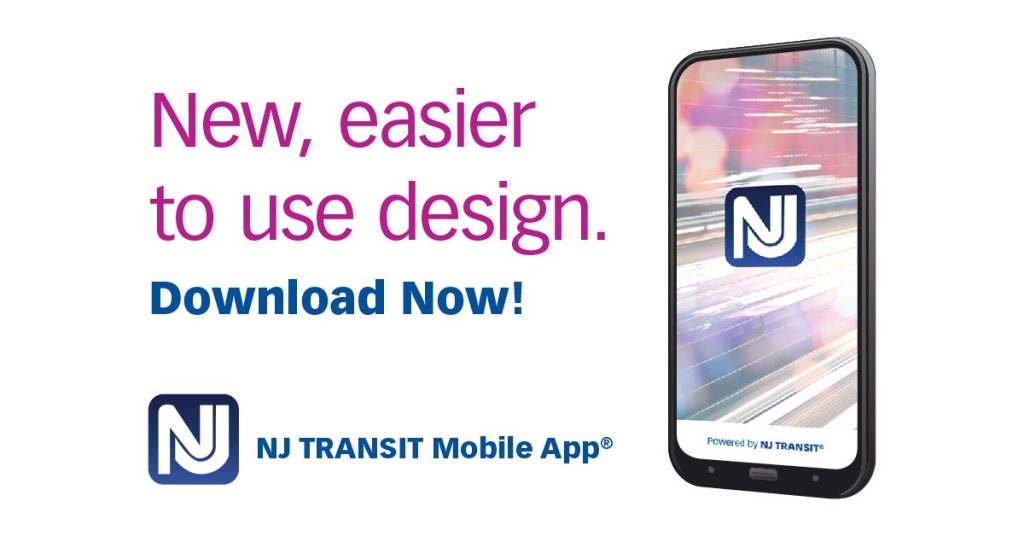Lost in Transit: A Critical Exploration of the NJ Transit App’s User Experience
X (Formerly Twitter), 24 Oct. 2019, twitter.com/NJTRANSIT/status/1187453341221163009. Accessed 10 Sept. 2023.
The NJ Transit app offers essential tools for navigating New Jersey, New York, and Philadelphia. It lets you buy and display tickets on your mobile, stay updated with real-time transit info, and plan trips for trains, buses, and light rail. Plus, you can store cash for quick ticket purchases, receive alerts, and check schedules. It’s a handy tool for navigating New Jersey’s transit network.
Menu
The NJ Transit app offers users the primary functionality of purchasing transit tickets, but it presents several usability challenges. Upon opening the app, the hierarchical structure may overwhelm users initially. But the navigation and wayfinding hierarchy is actually clear, following a top-to-bottom hierarchy by its functions’ importancy. It also applies the best mapping method by placing controls directly on the items to be controlled (buttons), with distinct icons and labels on each item. Menu buttons and notification buttons also provide clear affordance showing which function page the users are currently on and which button is pressable.
Buy Tickets – Special Promotions
By entering the “buy tickets” screen, the user is greeted with transportation options, special promotions, and Quick buys. When users tap into the “special promotion” section, they are met with an empty screen, devoid of any feedback or indication of whether it’s loading, encountering an error, or simply lacking ongoing promotions. This absence of feedback leaves users in a state of uncertainty. To enhance the user experience, the app should provide real-time updates or feedback related to ongoing promotions or clearly communicate when no promotions are available.
Buy Tickets – Bus Ticket
When attempting to purchase a bus ticket, the app presents users with options for “route & zone” and “Origin & Destination.” This design aligns well with the mental models of experienced commuters who are familiar with stop names and locations. However, it poses a significant challenge for travelers or newcomers who may find it difficult to navigate. Presenting all available stops in a list format amplifies the overwhelm factor for new users. The absence of a “map” or “search location” function further hinders users from visualizing their journey or ensuring they are at the correct stops. This forces users to resort to external map apps, potentially leading to errors, confusion, and frustration as they manually input information from Google Maps back into the NJ Transit app.
Buy Tickets – Zone
Moving along the purchasing process, users encounter another hurdle when required to select the zone, which requires a reflective level of understanding. On this page, there is no help or documentation regarding what “zone” means and how it will affect the pricing. Users have to search on Google first and personally understand what zone means and which zone they are in. It is also very inconvenient for users who are familiar with the transit system, they still have to rely on prospective memory (remember which stops to get off, remember what zone you are at and what zone you will be getting off).
Rider Tools – Trip Planner
The trip planner functionality within the Rider Tools allows users to input addresses instead of relying solely on stop names, expanding the system’s flexibility. However, it fails to capitalize on the opportunity for improved wayfinding. Although users can enter addresses, the system does not provide any visual aids or maps to display the locations of these stops, hindering users’ spatial comprehension. Additionally, the app presents “address input” within a large paragraph box, and splits the “travel from” and “travel to” components across separate pages. These do not follow the established user conceptual models, potentially causing confusion by breaking the continuity of the input process and reducing user efficiency. Addressing these issues through improved visualization, appropriate feedback, and help & documentation would lead to a more user-friendly and effective trip planning experience, aligning with the principles outlined in “The Design of Everyday Things.”
